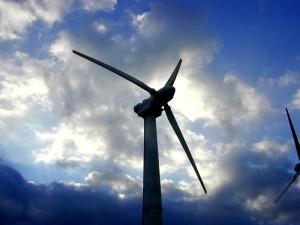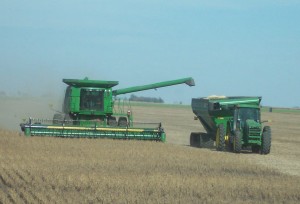
Eric Freedman
Commentary
What role will environmental issues play in this fall’s elections?
There are plenty of eco-areas for debate, disagreement — and consensus — among Michigan’s far-right to far-left cadre of candidates for state, federal and local offices, from governor and U.S. Senate to county commissioners.
Some issues have grabbed headlines because of what’s gone wrong or could go terribly wrong here at home. Among them: Asian carp threatening the Great Lakes eco-system, continuing adverse effects of the 2010 Enbridge oil pipeline spill that polluted the Kalamazoo River, and fluctuating water levels in our inland lakes and the Great Lakes.
Others are politically contentious on a broader scale — human-induced climate change and the policy impact of climate change deniers come to mind, as does nuclear energy. So does wolf hunting. So do strategies to expand alternative energy sources as many of Michigan’s coal-fired plants reach retirement age.

Energy is on Michigan minds.
If our candidates making stump speeches and buying advertising don’t think the environment ranks high in the minds of voters, perhaps they’re defining “environment” too narrowly. Perhaps they omit transportation and zoning and development when they list environmental topics. Perhaps they fail to recognize that our citizens are deeply engaged in environment-related activities and fiercely want to preserve — and expand — the natural resources that make those activities possible and provide a strong foundation for Michigan’s quality of life.
Too many fall short in this regard.
Thus it was reassuring to read a recent front-page article in the (Greenville) Daily News reporting on a forum about conservation issues that drew three legislative candidates and one legislative aide. The event organized by Michigan United Conservation Clubs took place in Stanton, where participants discussed Asian carp and other invasive species, hunting regulations, climate change, renewable energy and relations between farmers and hunters.
Based on my 30 years of journalism experience in Michigan, I believe that

Farming and the environment another Michigan hot button. Image: USDA
community editors are attuned to what interests their readers. I believe that sensitivity and that knowledge inform their editorial judgment about what stories to report and where to place those stories in their newspapers.
So as a proxy to get a sense of some enviro-issues that are on the public’s mind, I grabbed a stack of recent issues of daily and weekly Michigan newspapers for a seven-day period in August. [In the interests of full disclosure, they are among the more than 25 newspapers that subscribe to Capital News Service, run by the MSU School of Journalism. I’m the director of CNS.]
The most contentious topic concerned the Court of Appeals decision allowing operation of a controversial copper and silver mine in the Upper Peninsula. The ruling that upholds Department of Environmental Quality approval was the latest step in a long-running battle against the project waged by the Keweenaw Bay Indian Community and the Huron Mountain Club. The (Marquette) Mining Journal reported the court ruling on Aug. 14, noting that the mine is expected to open this fall.
That’s not all that the Mining Journal found environmentally newsworthy that day. Another front-pager reported on State Senate action move intended to ward off November ballot proposals about wolf hunting. And a third front-pager explained Department of Natural Resources Director Keith Creagh’s review of public land transfers across the state.
Here’s what else as I found as I read Michigan’s front pages:
- A Right to Farm Act dispute involving a horse rescue business in Weber Township (Lake County Star, August 14)
- The possible drilling for oil under Hartwick Pines State Park (Crawford County Avalanche, August 14)
- Creagh’s decisions on two proposed U.P. land deals (netting two stories in the Mining Journal, August 15)
- A zoning dispute for lakefront property on Fisher Lake (Three Rivers Commercial-News, August 15)
- An arts performance in Muskegon about the potential for alternative energy (Ludington Daily News, August 15).
- Gov. Rick Snyder’s and Public Service Commission Chair John Quackenbush’s thoughts on a U.P. energy issue (Mining Journal, August 16)
- Oakland County flood damage after heavy rains (Sturgis Journal, August 16)
- DNR’s construction of a boat ramp on the Pine River in the Eastern U.P. (Sault Ste. Marie Evening News, August 18)
- Opening of the Fred Meijer Flat River Valley Rail Trail in Belding (Greenville Daily News, August 18)
- Walleye stocking (Sturgis Journal, August 18)
- A study of the benefits of mass transit (Cadillac News, August 18)
- Scottville’s approval for ORVs to operate in town (Ludington Daily News, August 19)
- Sault Ste. Marie’s cancellation of this fall’s goose hunt (Evening News, August 19)
- Harbor Spring’s cancellation of a proposed waterfront expansion project (Petoskey News-Review, August 19)
- Alpena’s hearing on new construction-related traffic regulations (Alpena News, August 19)
- River trail plan considered in St. Joseph County (Sturgis Journal, August 19)
- A “cool wave” of weather hitting the northern Lower Peninsula (Traverse City Record-Eagle, August 19)
- A triple play for the Sault Ste. Marie Evening News: access to the Upper St. Mary’s River, the frog-bit invasive water plant and the planned sale of the Round Island Passage Lighthouse on Mackinac Island (August 20).
And finally:
- The death of Gladwin County’s best-known deer, Roscoe, the first bottle-fed fawn born at Whitetails Love (Record & Clarion, August 20).
Individually, many of those events and disputes have limited public effect. Collectively, however, they signal the importance to the public of environmental considerations that affect how they power their homes and businesses, how they travel, how they work, how they stay healthy and how they enjoy their free time.
Now if we could persuade our candidate cadre to recognize and address the pervasiveness of such issues in the very fabric of our state.
Eric Freedman is the director of Michigan State University’s Knight Center for Environmental Journalism. This column first appeared in Dome.
http://www.climatecentral.org/news/87-cities-4-scenarios-1-really-hot-future-for-u.s-17866
The point of this exercise is that to show how much we make a difference in the future. RCP8.5 will change what Michigan farmers can grow. RCP2.6 means Michigan Farmers have very little need to change. Its that simple.
Grand Rapids Michigan
average days above 90*F
RCP8.5 which is a worst case scenario or todays emission rates for the whole century
today………………9
2050……………..30
2100……………..58
RCP2.6
today…………….9
2050…………….12
2100……………..12